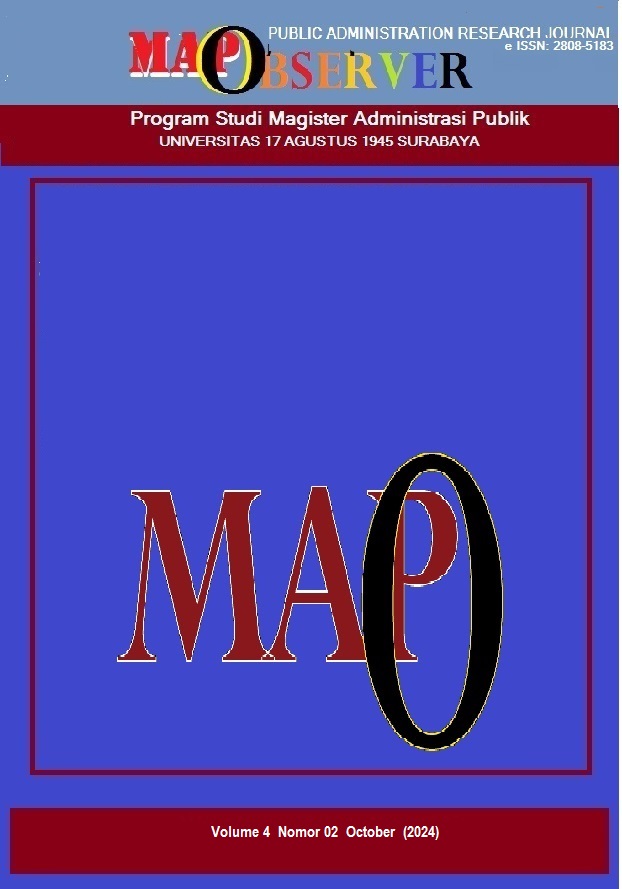PUBLIC SATISFACTION LEVEL IN E-KTP SERVICE IN TAMBAKSARI DISTRICT, SURABAYA
Abstract
Public service providers must evaluate the performance of public service delivery periodically. ; To carry out The performance assessment as referred to in paragraph (1), is carried out by measuring the community satisfaction index by the public service standards of each public service provider; If there is a discrepancy between the value of the community satisfaction index and the standard of public services, coaching and capacity building for public service delivery will be carried out. The procedure for implementing the guidance and capacity building for the provision of public services is regulated by a Governor's Regulation. Based on the above requirements, the Governor of East Java instructed all public service units in the Regency/City/Province in East Java to conduct periodic evaluations every three months. Weaknesses or weaknesses of each public service unit must be informed about how to handle them to the public. Therefore, to measure the degree of community satisfaction level in the E-KTP service in Tambaksari District, Surabaya City, it is very urgent, to write a final project in the Public Administration Study Program. As for the formulation of the problem of this research, how much is the degree of community satisfaction in the E-KTP service in Tambaksari District, Surabaya City? E-KTP service in Tambaksari Subdistrict Surabaya The interval value is 3.35 if converted the IKM Interval Value is between 81.26 - 100.00 with the predicate of service quality = A = Very good. From research results.
Downloads
Copyright (c) 2024 Niken Yustianing Tyas

This work is licensed under a Creative Commons Attribution-ShareAlike 4.0 International License.
-
The MAP Observer journal allows authors to retain the copyright of their papers without limitation. Authors may grant publishers non-exclusive publishing rights to publish articles. Granting first publishing rights to publishers also qualifies as unlimited copyright (because there are no restrictions imposed by publishers on author copyright).
-
Formal legal provisions for access to digital articles from these electronic journals are subject to the terms of the Creative Commons Attribution-ShareAlike (CC BY-SA) license, which means MAPO Observer Journal has the right to store, change formats, maintain in a database, maintain and publish articles without asking. permission from the Author as long as the Author's name is the owner of the Copyright.
-
Printed manuscripts and electronic publications are open access for educational, research and library purposes. Apart from these purposes, the editorial board is not responsible for violations of copyright law.





